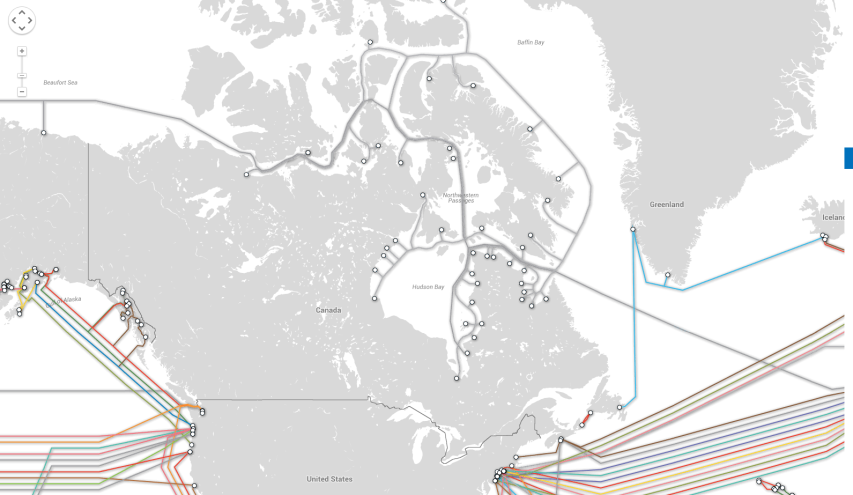In The Atlantic, Ingrid Burrington tries to persuade her editor that the submarine cable network is still of critical importance to understanding the cloud:
“So Ingrid,” Sam asked, “how exactly will you convince your editor that submarine cables are relevant to The Cloud?”
We were maybe still in New Mexico or somewhere in Kansas. It was a night drive. Time moves weirdly during night drives. All roads basically become the closing moments of Terminator 2. Whenever it was and wherever it was, it was apparently a good time for my driving partner to pose questions about some of the stories I had lined up for this series, including one exceptionally long piece about a submarine cable (which, dear reader, will run later this week).
“Well,” I replied, “clouds are just evaporated molecules of water that emerge from larger bodies of water. Oceans are bodies of water. It’s … it’s relevant.”
Look, I was pretty tired. But if there is a case to be made for placing submarine cables within the landscape of The Cloud, it’s more a case for historical continuity and resonance. Cloud infrastructure is a landscape of interdependent systems, submarine cables among them.
Submarine cables don’t come up in the news that often, but if they do it seems to be in two forms: short articles reminding everyone that the Telegeography Submarine Cable Map exists, and short articles of hand-wavey reminders that submarine cables are vulnerable to harm (from tectonic plates, ship anchors, sharks, and terrorists, among others).
While these are totally valid topics to explore, I often find these stories lacking in context about the various systems, geographies, and politics that shape submarine networks. While there are lots of other super compelling aspects of submarine-cable law and policy (says the person who owns a copy of Submarine Cables: The Handbook of Law and Policy), here are two questions that might help readers take in Telegeography takes with a little less gee-whiz and a little more clarity.
Speaking of submarine cables, I was unaware of how many northern Canadian communities are connected via that method:





